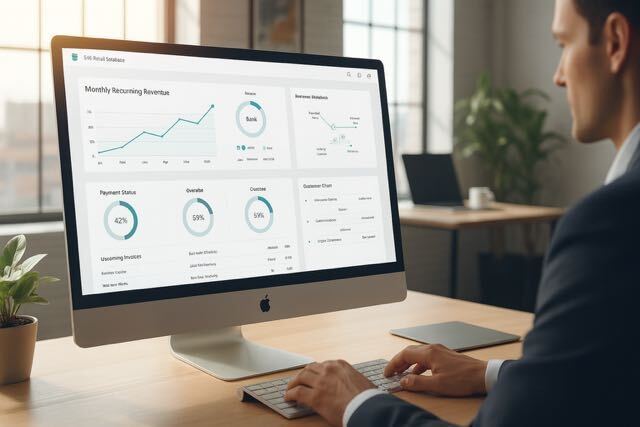How to Set Up SaaS Pricing Models to Attract SMBs

“Price is what you pay. Value is what you get.”
Warren Buffett’s famous words might sound simple enough. But, setting up pricing models to attract small and medium businesses (SMBs) can be tricky. You set your prices too high, and you chase them away. Or you set them too low, and you might cripple your business.
The overwhelming number of SaaS pricing models, tactics, and pricing strategies make it impossible to know where to start to get the growth you need. In this post, discover how to set pricing models that attract SMBs. It starts with understanding what SMBs are looking for in SaaS technology.
Know what small businesses are looking for
We recently surveyed 350 SMB IT companies with 500 or fewer employees, across the United States, Canada, United Kingdom, Australia, and New Zealand. Our goal was to gain an understanding of their dynamic pricing requirements.
Of the respondents, 66% viewed SaaS technology as essential to business success. However, 31% indicated proof of return on investment (ROI) is critical to their technology adoption process. Also, 56% reported technology budgets are rising, with over half of the respondents planning the largest-ever budget increase.
Throughout the process of identifying the right SaaS solution and ultimately purchasing applications, SMBs use multiple information sources. In the initial research phase, they place a high value on recommendations from peers and colleagues. However, their technology partners often guide their final purchase decision. As discovered in the survey, 61% of respondents reported they would buy solutions through the partner route.
SMBs or their technology partners assess applications. Of the SMBs who responded, 43% indicated it’s critical to understand pricing and how they benefit their business. However, respondents in the US and Canada noted free trials and money-back guarantees as more important than in the UK, Australia, and New Zealand.
Further, 47% reported being able to “pay only for what businesses use” as a high priority. Meanwhile, 43% preferred “low initial cost.” Being “easy to deal” with is essential in the US and Canada with 52% stating it as a very important parameter in contrast to 39% from the UK, Australia, and New Zealand.
The most important considerations include:
- 54% of SMBs expect to easily determine the specific benefits to their business, such as time or money savings.
- 54% of SMBs want simple pricing with transparent and all-inclusive details.
- 47% of SMBs prefer to pay only for what they need and use.
Download Free Report | Inside the SMB SaaS Technology Buying Process
Implement a pricing strategy to attract channel partners and SMBs
SMBs rely on technology partners to buy their SaaS solutions. Therefore, it’s essential to list your technology in marketplaces so technology partners can discover and directly procure your solutions. Beyond having a presence in marketplaces, you need to make your products easier to afford, buy, and implement for technology partners’ SMB clients.
An edition-based pricing plan for your products provides balance across your offerings while allowing partners the right to choose. These pricing plans include the following levels:
Free → Provides a core set of features for a limited number of users.
Standard → Offers the same core features for a high number of users.
Premium → Enables advanced features with more complex use cases.
Business → Provides scale and sophisticated administration features.
Regardless of the pricing plan your technology partner chooses, they’ll have access to your product’s core features. In the long run, a transparent and straightforward SaaS pricing model makes it easier for your partners to order and sell.
Take the friction out of purchasing decisions
SaaS pricing is more than an indicator of your product’s value but also your company’s values. Giving technology partners anything less can chase them away.
You must know SMB demands and how to sell your products effectively. You also need to weigh your value propositions and get fairly compensated for all your services. To simplify SaaS pricing, consider critical components of a profitable SaaS pricing strategy:
- Find the balance between value and revenue.
- Fine-tune your price to fit the SMB buying process.
- If you bring your channel partners into the mix, achieve revenue goals together.
From transparent SaaS pricing models to value-based pricing, show your technology partners and buyers how much you value them. Create a reasonable and inexpensive pricing strategy that removes friction from purchasing decisions. By doing so, you build trust, setting you on the road to long-term partnerships.
Discover how you can grow channel revenue and scale your partner programs with Zomentum PartnerAlign. Apply to join!





.png)









